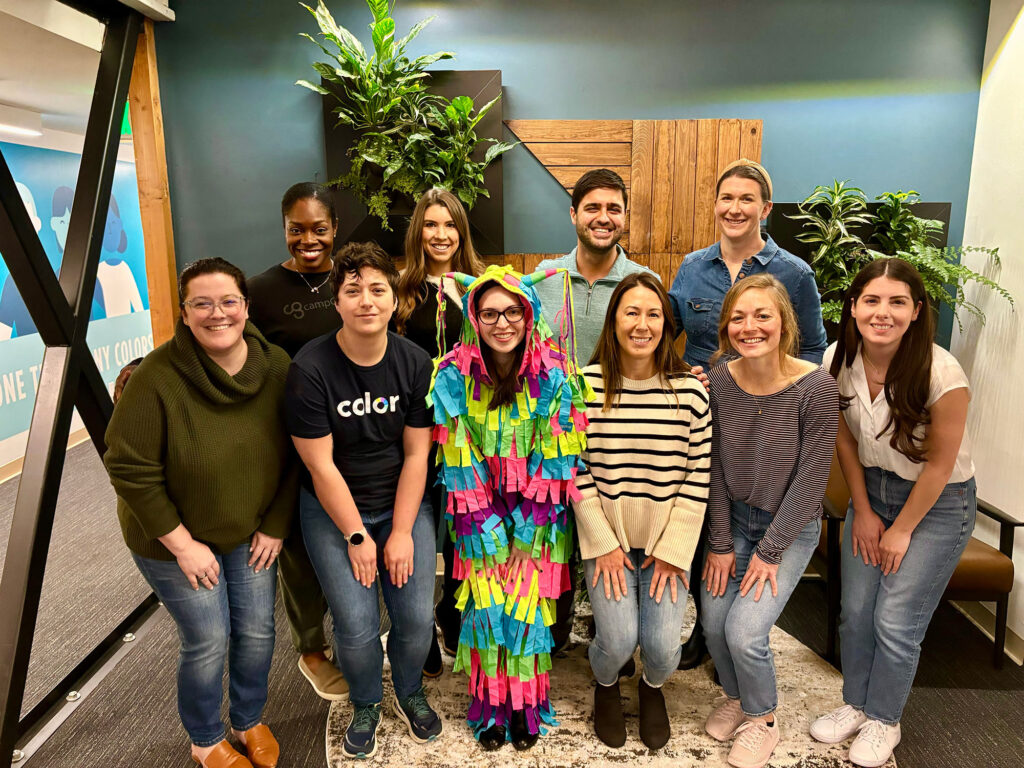News & Articles
‘Without it, we may have lost her’: A rare heart condition revealed through genetic testing
Abby Reisinger

When Carmelina Heydrich, MS, LCGC, first considered getting genetic testing, the impetus was a long family history of cancer. “My mom has had breast cancer and so have all the other women in her family. There’s also breast and ovarian cancer on my dad’s side. Concerns about increased cancer risk have always been on my mind.” So, it was surprising when genetic testing in the Heydrich family revealed no mutations associated with cancer risk, but instead revealed something unexpected.

Carmelina first heard of Color while working as a genetic counselor in Boston in 2015. A physician in her office sent around a New York Times article about the company when it was first founded. “I remember reading through the article and saying out loud, ‘I want to work there.’” Two years later, ready to return home to the West Coast and looking for a genetic counseling role that would increase access to genetic testing for underserved communities, she joined the Color team. However, her family didn’t participate in testing until 2018. “The reason we all ultimately did it was my sister.”

Around 2012, Carmelina’s younger sister, Laura, began having unexplained fainting episodes. After six years of questions and almost 20 fainting episodes, doctors diagnosed her with a seizure disorder and pointed her to neurologists, but did not consider genetic testing or other referrals. In the fall of 2018, Laura fainted twice in the span of 12 hours, sending her to the emergency room. It was in the ER that Laura had her first EKG, on which doctors saw her heart was taking too long to beat (also called a prolonged QT interval), and sent her to cardiology.
“That was very shocking. My sister is very fit, she’s a personal trainer and exercise is a huge part of her life, so doctors had always told my family there was no way something could be going on with her heart.”

Carmelina knew prolonged QT intervals can be genetic and her job provided a faster path to testing than any of Laura’s other options. “In addition to analyzing genes associated with hereditary cancer, Color also tests for genes associated with hereditary heart conditions…I had access to testing for my family for free [as part of my employee benefits].” Laura’s results came back positive for a mutation in the KCNH2 gene, which is associated with a hereditary condition called Long QT syndrome. Her doctors immediately sprung into action. “It wasn’t until the genetic test result landed on their desk that they seriously considered next steps to care for her heart.”
Laura’s fainting episodes were eventually determined to be due to her abnormal heartbeat, not seizures. “My family feels very lucky that my sister finally has the right diagnosis — without it, we might have lost her,” says Carmelina. Laura’s doctors implanted an ICD, an implantable cardioverter-defibrillator, to monitor her heart rhythm and provide electric shocks to the heart should an abnormal rhythm be detected.
Laura’s mutation was also found to be de novo, meaning that it was a “new” mutation in the Heydrich family — neither of her parents nor her siblings have the mutation. Though rare, mutations like this can be a reason for testing multiple people in a family, especially those who have a concerning medical history. “In my family, the most striking history is the multiple generations of cancer, but there ended up being no mutations in any of the genes associated with increased cancer risk on either side of the family…if just my parents had been tested for cardiovascular and cancer risks, their negative results would have suggested that the next generation didn’t need testing. We would’ve missed my sister’s mutation.”
Cases like this guide how Carmelina counsels her patients. “When someone has a health concern like Laura did, they should consider genetic testing even if they don’t have the ‘right’ family history. And when a patient has negative test results, I still discuss testing for relatives as an option to explore risks in the family further. Your negative result, while reassuring, does not automatically mean there is not a genetic risk factor in the family.”

The Heydrich family truly believes that accessible, clinical-grade genetic testing, like Color, saved Laura’s life. After recovering from the surgery to implant her ICD, Laura continues to work as a personal trainer and can still live her active life, now with less worry of another cardiovascular event. “Having an explanation for a health problem is one of the most powerful things about genetics. Knowing why something is happening — being able to put a name to something — means life-saving steps can be taken.”



